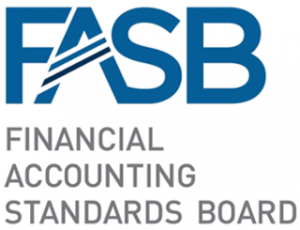“The changes required by CECL require a much deeper level of modeling, analysis
and reporting than what has previously been required.”

Are you ready for CECL?
Current Expected Credit Loss (CECL) / IFRS 9
The implementation of the Accounting Standards Update on Financial Instruments – Credit Losses (Topic 326)[1], issued by the Financial Accounting Standards Board (FASB) in June 2016 and the International Financial Reporting Standards (IFRS) 9 are some of the most significant accounting projects that needs to be completed over the next few years by any institution issuing credit, including banks, savings institutions, credit unions and holding companies filing under GAAP accounting standards.
The changes to credit loss accounting mandated by FASB ASC 326 and IFRS 9 requires a move to allowances based on current expected credit losses” (CECL), forcing financial institutions to estimate expected losses over the life of most credit exposures not subject to fair value accounting and this will require significant changes to their loss forecasting methodology and infrastructure.
What is it?
CECL, or current expected credit loss, is a new accounting standard that will change how financial institutions account for expected credit losses. The CECL standard requires financial institutions to measure all of their expected credit losses for financial assets held at the reporting date based on historical experience, current conditions, and reasonable and supportable forecasts. They will have to use forward-looking information for their credit loss estimates. Under the new changes, banks will be required to calculate, and report on, continual life of loan estimated credit losses for their entire commercial and industrial loan portfolios. This will fundamentally change how banks estimate losses in their allowance for loan and lease losses (ALLL).
While both the impairment model in current expected credit loss (CECL) / IFRS 9 model are based on expected credit losses. The IFRS 9, however, differs from CECL in that IFRS 9 uses a three-stage approach. Under IFRS 9, debt instruments, excluding purchased or originated credit impaired financial instruments, move through three stages as credit quality changes.
Consequently, a financial institution would measure expected credit losses and recognize interest income depending upon the following stages:
Stage 1: Assets that are performing
Stage 2: Assets that have significant increase in default risk
Stage 3: Credit impaired
In contrast, the FASB’s CECL model requires entities to recognize lifetime expected credit losses for all assets, not just those that have had a significant increase in credit risk since initial recognition. Stated differently, CECL follows a single credit-loss measurement approach, whereas IFRS 9 follows a dual credit-loss measurement approach in which expected credit losses are measured in stages to reflect deterioration over a period of time.

Compliance Timeline
The Accounting Standard Update (ASU) on credit losses will take effect for:
- U.S. Securities and Exchange Commission (SEC) filers for fiscal years, and interim periods within those fiscal years, beginning after December 15, 2019.
- Public companies that are not SEC filers, the ASU on credit losses will take effect for fiscal years beginning after December 15, 2020, and interim periods within those fiscal years.
- All other organizations, the ASU on credit losses will take effect for fiscal years beginning after December 15, 2020, and for interim periods within fiscal years beginning after December 15, 2021.
Early application will be permitted for all organizations for fiscal years, and interim periods within those fiscal years, beginning after December 15, 2018.
Contact us today to schedule a call to discuss your CECL / IFRS9 needs.
